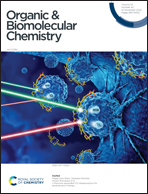Fullerene-containing pillar[n]arene hybrid composites
Abstract
The construction and application of fullerene-containing pillar[n]arene organic–inorganic hybrid composites/systems has been discussed and summarized. Both supramolecular interactions and covalent bonds were involved during the preparation process. By using supramolecular interactions, pillar[n]arenes mainly donate the hydrophobic and electron-rich cavity for complexing fullerene and its derivatives. The “bigger-sized” unmodified pillar[10]arene could directly include C60 in a stoichiometry of 1/1 via host–guest interaction, while the perfunctionalized “smaller-sized” pillar[5]arene with an enlarged channel-like structure could further interact with “size-fixed” fullerene. Additionally, recognition site-containing modified fullerene could integrate with the pillararene cavity for fabricating the functional supramolecular system, which could be further used for applications in photodevices. By forming stable covalent bonds, coupled pillar[n]arene and fullerene hybrid composites could be synthesized via either the modification of pillar[n]arenes with the fullerene subunits, or the utilization of fullerene as the partial structural skeleton for building pillar[n]arenes, in which diverse classic organic synthesis reactions were involved. Interestingly, those fullerene-containing pillar[n]arenes with free cavities could further participate in the formation of hierarchical architectures, such as mechanically interlocked molecules, by cooperating with the “dumbbell” molecule.
![Graphical abstract: Fullerene-containing pillar[n]arene hybrid composites](/en/Image/Get?imageInfo.ImageType=GA&imageInfo.ImageIdentifier.ManuscriptID=D2OB01664H&imageInfo.ImageIdentifier.Year=2022)


 Please wait while we load your content...
Please wait while we load your content...